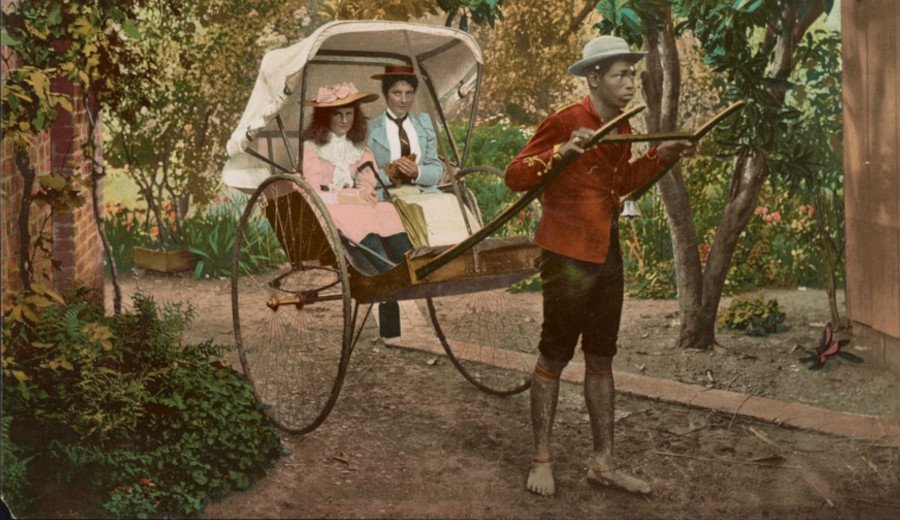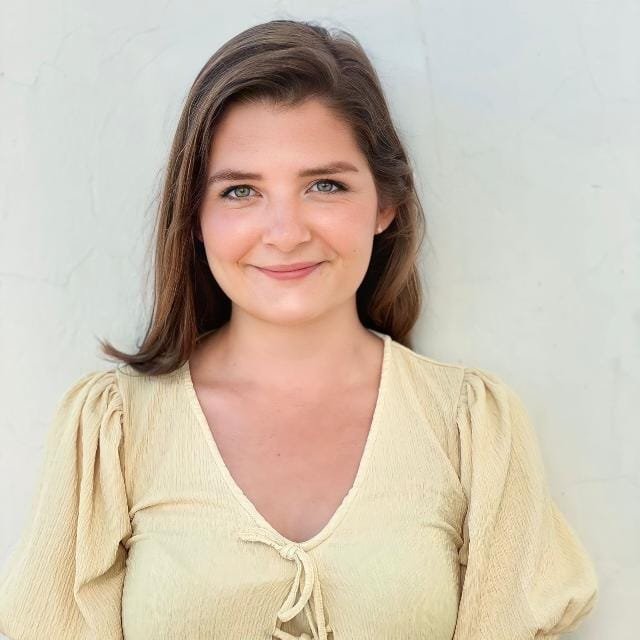“I wasn’t taught about colonialism in school — so I taught myself”

Written by Olivia Hooper
Photo: Photoglob Co., publisher; Wilson, G. W. (George Washington), 1823-1893. Source: Library of Congress

Being white and British, I was often told how lucky I was growing up, but the conversation never went further to ask at whose expense that comfort was made possible.

I grew up with everything that is supposed to make you feel safe and settled. It was the white picket fence cliché, in a quiet rural town. I lived in a bubble and for decades I never thought to question it.
It has taken me years to see that this silence was never neutral. Now, I think about privilege in the very real ways it shaped my understanding of the world. That reflection has led me back to school and the curriculum that left so much out. The more I unpacked it, the clearer it became: our education was not just incomplete; it was part of the problem. It nurtured colonial thinking, encouraged a white saviour lens, and avoided any serious reckoning with Britain’s past or present role in upholding global inequality.
What does a terrorist look like?
I have a vivid memory from year nine, at 13-14 years old, when I was in religious education and our teacher asked the class to draw a picture of a terrorist. Unfortunately, I don’t recall the purpose of the task or what our teacher said afterwards, but I remember the classroom buzz; some children laughed, and others whispered among themselves. I sat back in my seat pushing myself away from the desk, starting to feel uncomfortable as I knew what was coming from my classmates, and a sea of very similar sketches appeared on their pieces of paper. The teacher asked us to hold up our drawings and I spun around from my seat to see rows of bearded men, some with guns, some Brown, some Black, none white, and all of them “looked” Muslim. What filled their pages were the teachings of our classrooms, our society and our biased media.
“What did you draw, Olivia?” she asked me. I looked down at my page and slid it toward her. She lifted the paper and shimmied her glasses to the bridge of her nose. “Mmm interesting, a blank face with a question mark. And why did you draw that?”
The room was quiet. “Because I don’t know what a terrorist looks like, it could be anyone,” I said.
The truth is, I imagined the same stereotype as everyone else in that classroom. The difference was that I didn’t draw it. I remember this moment so clearly because it was the first time I realised that we were not questioning why we thought like this in our predominantly white town.
It didn’t stop at school. Bias and disinformation were everywhere, and this was before non-Western media became more accessible through digital and multilingual platforms. Before this, everything we knew or heard was being relayed in a one-sided argument. Beyond the news, every blockbuster movie about war and terrorism boiled down to a baddie who was always, as my classmates had depicted, a Muslim man.
The colonial elephant in the room
When I reflect on this plenty of other flashbacks come to me, all equally uncomfortable. I remember learning plenty about “underdeveloped countries,” as they were referred to then.
Time and time again we would be shown a documentary of some “poor” African country. The same images filled the screen: densely populated areas of informal housing, extreme poverty, children with swollen pop bellies from malnutrition, women cowering in a corner with their heads covered by different patterned scarves, or their faces covered entirely.
On another occasion our geography teacher showed us a documentary about Brazil. It focused on poverty and the impacts of climate damage, but not who or what causes them. The video failed to mention Brazil’s 300 years of colonial rule. Nor did it explain the damage caused by Western powers, such as the Spanish bank Santander helping to fund deforestation in the Amazon.
Political issues were not even a footnote in the syllabus. Important factors such as the West’s funding allocation for bombs, weapons, and military invasion or backing, which pushed whole regions into devastation, were conveniently avoided. Not once did our textbooks discuss neocolonialism or draw the vital link with colonial countries, with the UK as the biggest culprit.
Instead, this topic remained the elephant in the room, along with every other catastrophic event inflicted on these countries. This gap in the education system seems even more deliberate when you consider there are only 22 nations in the world that Britain has not colonised, or is still colonising to the current day.
This omission of history does wildly dangerous things to a young person’s brain. Throughout my childhood, this rhetoric was etched so deeply on my mind that if someone were to mention Africa, I pictured poverty, war, and violence.
It’s a far cry from what I think now. As I write this article, I am sitting in my apartment in Morocco, from where I can see the luminous white silhouette of the impressive art museum through the window. I can hear the ding of the tram on the street, and the clip-clop of women’s shoes on the squeaky clean marble pavement, as they leave the office for lunch dressed in pristine suits. It is just a tiny slice of what Africa has to offer, but is a far cry from the images I was shown in school, of mountains of rubbish, flies, and malnourished people. The absence of this view of Africa is a deliberate tactic to sustain colonial behaviours.
Slavery is not dead, it’s evolved
I remember being taught about the impacts of the British Empire on the slave trade. Our history teacher, with her pearl necklace against a royal blue top, and thin cheekbones layered with bright pink blusher, stood tiny and frail next to the board showing us images of how people were captured, sold, transported, and the forced labour they endured.
We were taught that slavery happened, in the past tense. Yet if anything, it has evolved. Now predators have the infrastructure to reach anyone they wish to exploit, as well as the means to hide their actions. Estimates from Unseen Charity show that 50 million people worldwide are living in modern slavery, with 122,000 in the UK alone. Of these, 28 million people are in forced labour and 22 million are in forced marriages.
The global scale of slavery and its lasting impacts were not mentioned in our curriculum. On school visits to museums, we didn’t learn about the theft the UK committed, including stolen art, sculptures, and jewels that are still on display in our museums, or encrusted into our royal family’s crowns. This cultural theft is so extensive it has a dedicated section on the British Museum’s website. The description of the items is written without accountability, a true character trait of colonial mentality. The text is laced with ambiguity on how these items became prisoners. Lose wording such as “some of the objects from this collection may have been taken or acquired,” are offered.
Even its name, The ‘British’ Museum, seems void, as around eight million artifacts on display are not from Britain, at least 2,000 of which have been reported as stolen from their home countries.
A decade has passed since that day in school, and only recently did I start to realise that it is never too late to question what you have been taught. My own complicity, presented in the form of ignorance, was one of the hardest things I had to come to terms with.
Gaining a new perspective has revealed that my misconceptions came from a place of fear and lack of education.
“Don’t let history repeat itself” is a saying we can’t ignore — and a reminder to do better.

This article was produced as part of ‘How to write for impact’, a training and mentorship programme created by NADJA Media for members of Politics4Her, a feminist youth-led digital platform advocating for the inclusive participation of young women in leadership. To find out more about our training opportunities, email training@nadja.co
READ MORE


One thought on ““I wasn’t taught about colonialism in school — so I taught myself””